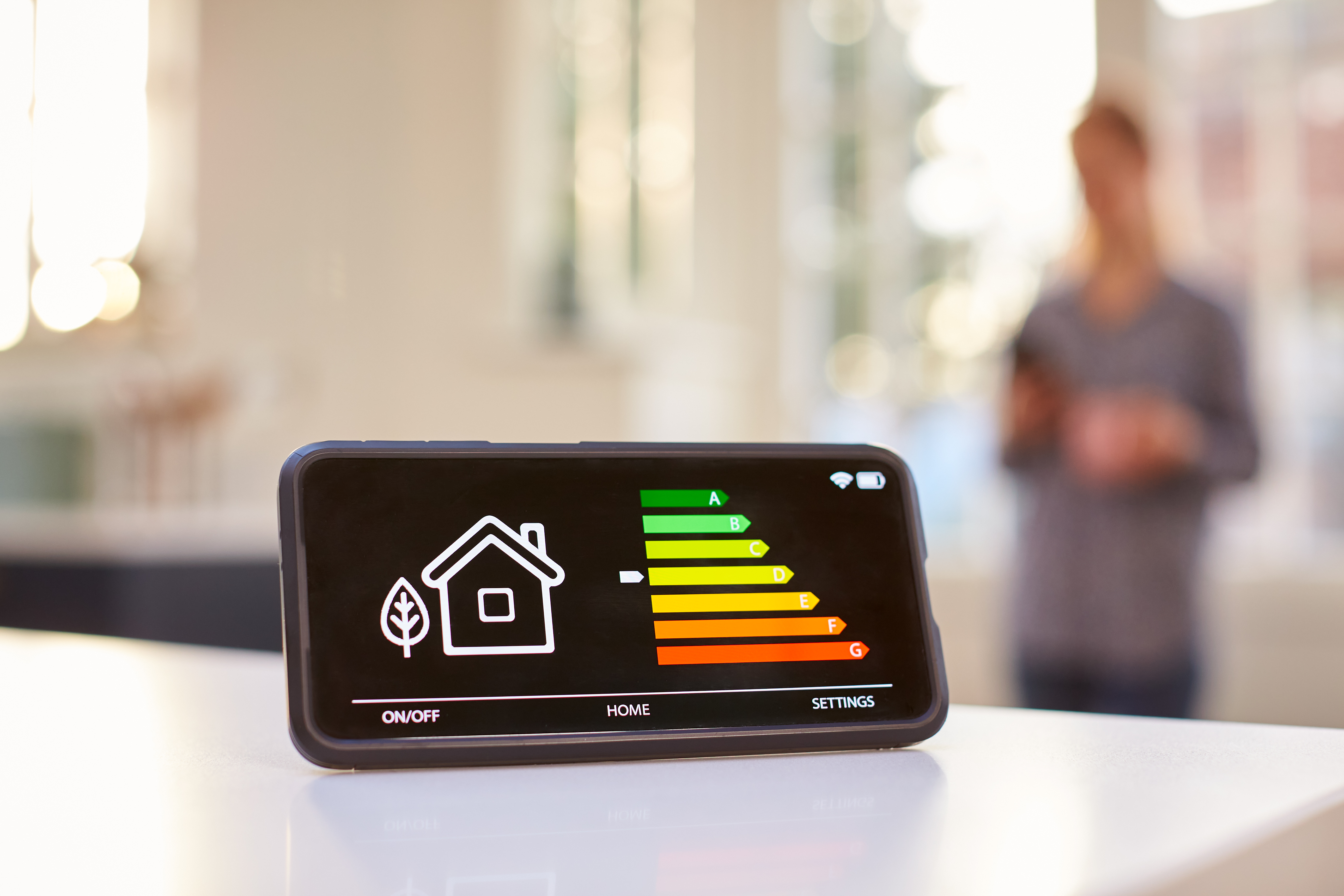As temperatures begin to drop in winter, home energy costs can increase significantly. To help, read on to discover our top tips to save energy in winter.
Seal All Air Gaps
Table of contents [Show]
- Seal All Air Gaps
- Save Energy in Winter by Insulating Your Home
- Use Natural Light
- Adjust Your Thermostat to Save Energy in Winter
- Maintain Your Fireplace
- Reverse Your Ceiling Fans
- Wrap Your Hot Water Tank
- Manage Your Furnace to Save Energy in Winter
- Plant Trees
- Close Your Garage Door
- Conclusion: Various Ways to Save Energy in Winter
Gaps in windows, doors, and walls can increase your energy use by letting heat escape and cold air enter. These gaps will force your heating system to work harder to maintain a comfortable temperature. Early winter is a perfect time to fill such gaps to save energy before the freezing winter weather arrives.
Our Energy Advisors suggest focusing on foam cover behind exterior plugs, which can leak air even in well-insulated homes. He also advises that plugging gaps around doors is critical as a great deal of air often escapes through these areas.
Our advisors also recommend using removable caulking to plug leaks behind exterior plugs and around doors. They suggest this type of caulking because it is tighter than weather stripping but can be peeled off relatively quickly if emergency access is required.
Alternatively, qualified households can sign up for one of two free energy conservation programs – the Energy Affordability Program and the Home Winterproofing Program. These programs provide draft proofing free of charge for eligible customers.
Save Energy in Winter by Insulating Your Home
Inefficient attic and wall insulation will also let a great deal of heat escape, causing you to use more energy to warm your home. Again, early winter is an excellent time to check your insulation quality before the frigid winter temperatures set in.
Greensaver’s Home Energy Solutions Team can assess the effectiveness of your insulation and upgrade it if necessary. Alternatively, the Energy Affordability Program and the Home Winterproofing Program – offer insulation upgrades free of charge for those who qualify.
Use Natural Light
An easy way to save energy in winter is to leave blinds and curtains open on south-facing windows. Letting sun stream through the windows will warm the room and reduce the burden on your heating system.
Adjust Your Thermostat to Save Energy in Winter
An effective way to save energy in winter is by managing your thermostat. In winter, the optimum home temperature is 20°C, but try to set your thermostat as low as possible while maintaining a comfortable temperature. You can even try throwing on a sweater instead of leaving the thermostat on high.
If you can afford it, invest in a smart thermostat. These thermostats learn from your cooling patterns to adjust the temperature automatically. You can also modify them from your cellphone if you accidentally leave the heating on high when you leave your home. They are so effective at reducing energy waste that they can reduce heating costs by 10-12%.
Maintain Your Fireplace
If you have a wood-burning fireplace in your home and start to use it in winter, there are steps you can take to save energy.
Firstly, remember to keep the damper – the vent that controls airflow – closed when the fire is not burning. Leaving the vent open will let warm air escape through the chimney. Also, inspect your damper to ensure it closes properly. If it does not, it’s time to replace it.
Secondly, remember to sweep out the ashes from your firebox regularly. As little as one-tenth of an inch of soot can reduce the heat output of a fireplace by 50%, decreasing its efficiency.
Reverse Your Ceiling Fans
In summer, ceiling fans should be spinning in a counter-clockwise direction. This direction pushes cold air down, creating a breeze. However, when the weather gets colder in winter, this should be reversed to a clockwise direction to force warm air back down into the room.
Wrap Your Hot Water Tank
Insulating your water heater could reduce heat loss by 25%-45%, saving energy in winter. If your water heater is warm to the touch, it likely needs to be insulated. You can buy pre-cut jackets or blankets, which will do the trick.
Manage Your Furnace to Save Energy in Winter
Early winter is the ideal time to ensure that your furnace is in optimum working condition for the long, cold months ahead. It is essential to keep your furnace filter clean as clogged and dirty filters will waste energy by forcing the unit to work harder.
The first step to ensuring your furnace filter is clean is to purchase a furnace filter whistle and place it directly on the filter. The furnace filter whistle will emit a whistling noise when the filter is clogged with dirt and dust, telling you it is time to replace it.
At this point, you can either clean the filter yourself or hire a Heating, Ventilation, and Air Conditioning (HVAC) professional to clean the filter and do an overall checkup for you. If you decide to clean the filter yourself, check the manufacturer’s instructions on doing so.
Plant Trees
If you have a garden, consider planting trees on the north and northwest side of your home. Doing so will protect your home from cold winter winds, allowing your heating system to work less hard.
Close Your Garage Door
If you have a garage, remember to keep it closed as much as possible to save energy in winter. Doing so will retain warm air against the garage-side wall off the house, which will act as a buffer against cold outdoor air.
Conclusion: Various Ways to Save Energy in Winter
In winter, home energy costs can increase significantly as we heat our homes more. By following some of our winter energy-saving tips, you can stay warm while reducing your energy consumption.


